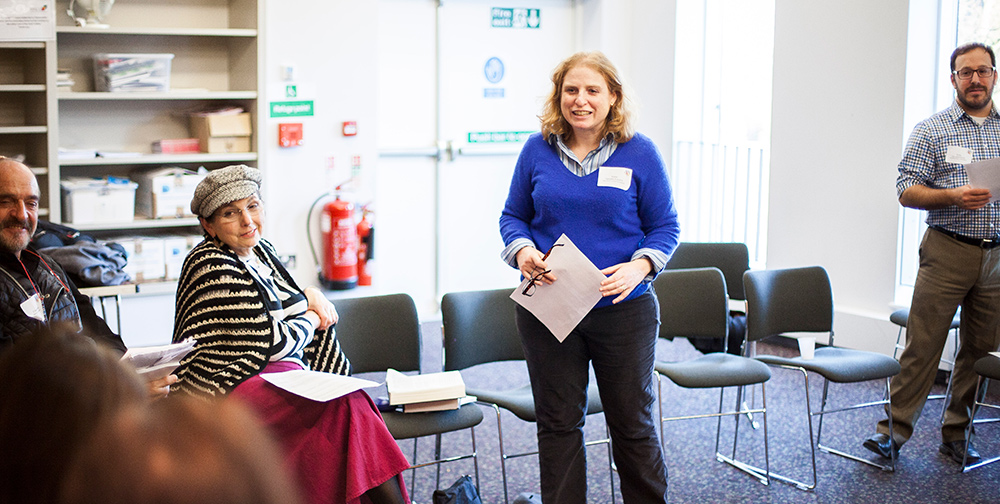On the Creation of Creation Myths

It has been long demonstrated within academic circlesthat there is a relationship between the Jewish stories of creation and other Ancient Near Eastern creation myths. While many of us pride ourselves on our ability to hold academic truths alongside religious ones, we mostly accomplish this by holding said truths in separate hands: in one hand, the religious truth of a Torah written by God, providing wisdom and guidance to the Children of Israel; in the other hand, a historical truth of the humans who crafted the biblical stories and wove them together, affected of course by their historical and social realities. The process that the human authors went through to produce the Torah is usually seen as academically interesting, but religiously irrelevant – but does that have to be the case?
We will soon read the very beginning of the Torah, in which there are two distinct creation narratives. Within academic study of the authorship of the Torah (theDocumentary Hypothesis), they are referred to as the P and J accounts of creation: P being the first creation story, in which God creates from a watery abyss in six days and rests on the seventh, and J the second creation story, in which God crafts man out of the dust of the earth alongside animals, and then woman as his companion, culminating in the rebellion of eating the fruit of the Tree of Knowledge of Good and Evil. Historically, the orders are flipped: the J account of creation is much older than the P account. With this in mind, it’s important to ask: why was the P account written at all, and why was it placed before the older J account?
The J account of creation is often understood to have been influenced by the older Classical Akkadian creation mythAtrahasis. Both creation narratives begin with a pre-creation chaos described as a barren wasteland, and the divine purpose for the creation of humanity is centred on agriculture. The J narrative also implicitly borrows fromAtrahasisby describing humanity as crafted from the earth with some physical element of the divine (in the Torah, breath; inAtrahasis, blood or saliva); both stories are interested in finding the proper place in creation for these semi-divine, semi-animal human beings. Read without the context lent to it by the later P account, the J creation narrative seems to be telling a story of a continually improving humanity, much like that which we see inAtrahasis; their start is animalistic, and they reach up towards the heavens (an act which is ultimately punished in both myths).
The P account of creation – the account which appears first in the Torah, and describes God creating in six days and resting on the seventh – developed later in history and seems to have been influenced by a different creation myth (the BabylonianEnuma Elish). The P narrative presents a very different theology: first, a watery abyss (replacing J’s barren wasteland); then, a God who creates through acts of speech (instead of crafting through clay); finally, instead of J’s semi-animalistic first humans, we have humanity as the pinnacle of creation, made ‘in the image of God’. By placing this narrative before the older J account, the editors of Torah have successfully revised J’s creation myth; now, instead of an animalistic humanity discovering its divinity and reaching upwards, P has successfully began the story with a perfect humanity (‘in the image of God’) whose divinity will be compromised in the Garden of Eden narrative. The theological truth of the J account has been replaced with a new understanding of the relationship between the divine and the human, and of the place of humanity in creation. When seen together, what we read in the Torah is the theology of the P account, which seems to have been a deliberate revision of J’s theology. For example, the nudity of the original humans in the J account when read alone furthers the animalistic feel of humanity’s origins; when seen through P’s lens of a perfect humanity, their nudity instead comes to represent their perfect innocence.The elements ofAtrahasis,Enuma Elish, and other foreign myths that have found their way into the Jewish creation stories do not seem to be accidental; instead, we see authors consciously using the language and motifs around them in order to craft and express their own theological truths. For J, that was a humanity consisting of both the animal and the divine, which struggled to find its place in creation. Without the aid of biblical criticism and study of Ancient Near Eastern mythology, this theological truth is lost to the whims of the P writer/s. It is a gift of modern biblical research that we can reveal a struggle in Jewish theological history about the place of humanity in the world. Instead of holding academic truths in one hand and religious truths in another, perhaps it is possible to hold them together, and to allow academic research to enrich our theological understandings of the Torah.
Natasha Mann is a member of New London Synagogue and a rabbinical student at the Ziegler School of Rabbinic Studies in LA, California




